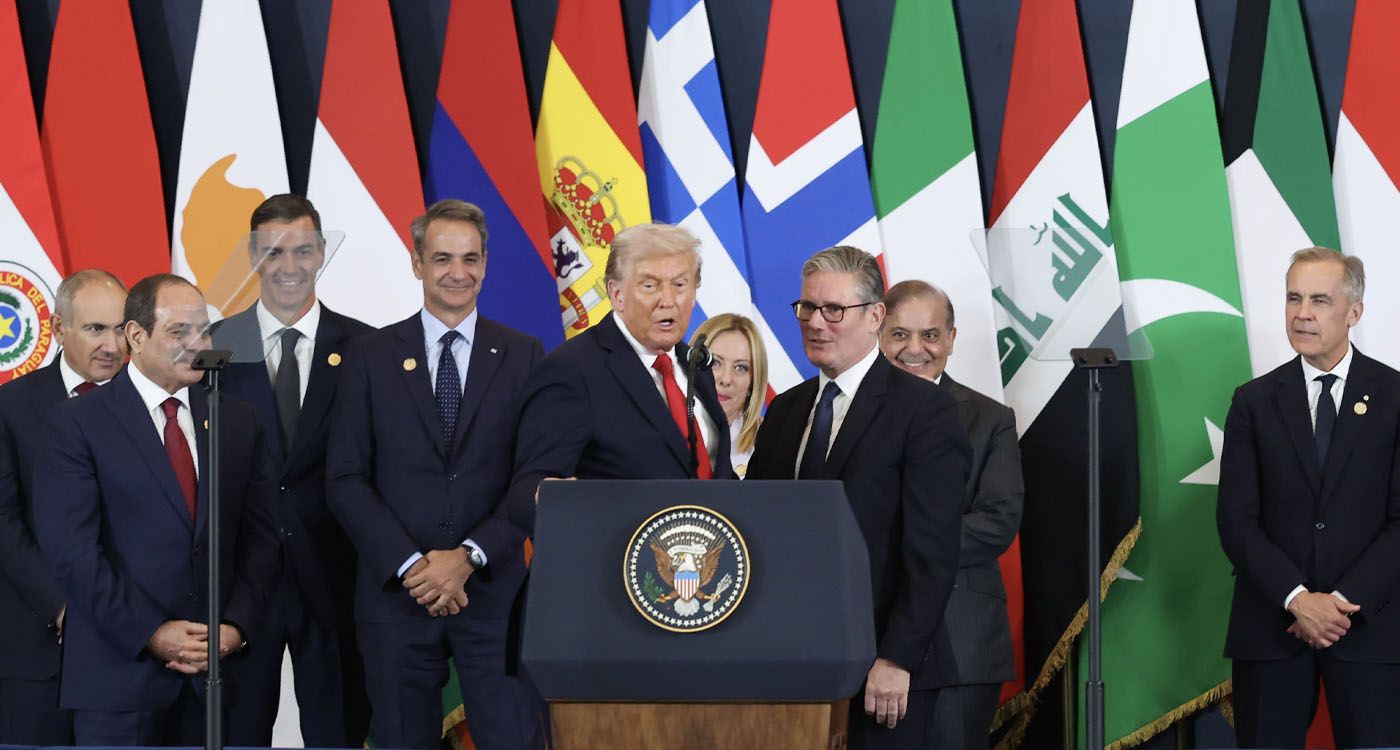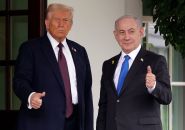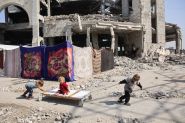- Home
- Middle East
- The Sharm al-Sheikh Peace Summit: How Trump Became the ‘King of Presidents’

©Wikipedia
When Air Force One touched down in Sharm al-Sheikh on October 13, 2025, the Red Sea resort known for coral reefs and diplomacy turned into the epicenter of world politics. Cameras caught an image that would dominate headlines: Donald Trump standing between Egyptian President Abdel Fattah al-Sisi and Palestinian Authority leader Mahmoud Abbas, smiling like a man who had just rewritten history.
Behind him, like a presidential parade, stood over 20 world leaders, France’s Emmanuel Macron, Britain’s Keir Starmer, Turkey’s Recep Tayyip Erdoğan, Qatar’s Sheikh Tamim, Italy’s Giorgia Meloni and Pakistan’s Shehbaz Sharif among them. The “Sharm al-Sheikh Peace Summit,” or as some dubbed it, The Trump Summit, was more than a diplomatic gathering; it was a coronation.
Trump had pulled off the unimaginable: uniting adversaries, calming two years of regional war, and positioning himself as the ultimate deal-maker, the King of Presidents.
Trump’s path to this moment began with what he called “the hardest deal of my life.” After 24 months of bloodshed in Gaza and more than 40,000 Palestinian deaths, he managed to broker a ceasefire between Israel and Hamas.
The deal came after weeks of relentless back-channeling. Trump leveraged America’s full arsenal of power, military aid to Israel, economic pressure on Hamas’s backers in Qatar and Turkey, and diplomatic threats that only he could deliver with a grin.
Then came the emotional turning point: Hamas released the remaining 20 Israeli hostages, while Israel freed nearly 2,000 Palestinian prisoners. The world watched, exhausted and desperate for relief. Trump seized that exhaustion, turning it into momentum, and then into a summit.
As he put it in his opening remarks: “Peace doesn’t come to those who wait, it comes to those who deal.”
Egypt’s role was not accidental. Trump needed a stage with legitimacy in the Arab world and security for global leaders, a place where cameras could roll and egos could meet. Sisi offered both.
By co-hosting with Egypt, Trump gained Arab credibility without compromising American leadership. Egypt, after all, had been the Middle East’s traditional mediator – from Camp David to the 2005 Sharm al-Sheikh summit that ended the Second Intifada.
This time, however, Trump flipped the script: instead of playing referee between Israelis and Palestinians, he cast himself as the global patriarch – handing out tasks, funds and photo ops.
Billboards across the resort read “City of Peace, Sharm al-Sheikh Welcomes the World.” Egyptian F-16s escorted Air Force One, and the streets were lined with red carpets and giant posters of Trump shaking hands with Sisi.
It was diplomacy as theater, and Trump was both director and star.
The secret to Trump’s success lay in his signature blend of charm and pressure. He called leaders personally, promised billions in reconstruction aid and threatened sanctions in the same breath.
He invited Erdoğan for a private lunch (“the most beautiful lunch, everyone says so”), flattered Qatar’s Emir into pledging $5 billion for Gaza’s reconstruction, and brought Pakistan’s Prime Minister and Army Chief on board by offering them roles in counterterrorism supervision.
During the summit, Trump staged what journalists described as a “diplomatic circus.” Leaders queued for over an hour to shake his hand. Macron joked he’d “never seen a queue like this except at Disneyland.” Sharif of Pakistan went even further, nominating Trump for the Nobel Peace Prize live on stage, calling him “the man who stopped seven wars.”
For Trump, this was not negotiation, it was performance art. Each handshake was a headline. Each laugh was a strategy. Each photo was a weapon. As cameras flashed, he branded leaders with his trademark nicknames, pointing at the UAE’s Sheikh Mansour with a grin, “Lots of cash, great guy, tremendous wealth,” then patting Iraq’s Prime Minister on the shoulder, “Lots of oil, beautiful oil.” Even Macron wasn’t spared, as Trump teased him for being “the little Napoleon of Paris” – every world leader got a tagline.
Behind the smiles stood the full weight of American power. Trump knew every leader in that room had something to gain or lose, depending on Washington’s goodwill.
He offered European nations a chance to participate in Gaza’s “Board of Peace,” a supervisory body co-chaired by himself and former UK Prime Minister Tony Blair. He promised Gulf nations investment influence and prestige.
To the Arab world, he dangled the promise of a “new Abraham Accords,” this time with Gaza at the center, not the margins. To Israel, he offered unwavering security guarantees, while simultaneously pressuring it to accept a partial withdrawal.
Even as Benjamin Netanyahu skipped the summit (after Erdoğan threatened to boycott if he attended), Trump managed to spin the absence as proof of his diplomatic control:
“We didn’t need everyone in the room. Sometimes, peace starts when the noise leaves.”
Timing was Trump’s invisible weapon. The world was tired – of war, of refugees, of endless headlines of destruction. By October 2025, both Israelis and Palestinians were desperate for an end, and world leaders wanted a political win they could sell at home.
Trump sensed the fatigue and turned it into opportunity. His narrative of “peace through strength” found new life. Even his critics reluctantly admitted that his unpredictability gave him leverage no other US president possessed.
In the chaos of the modern world, Trump was the only constant headline, and he knew it.
Not everyone was impressed. Some analysts dismissed the summit as a “showbiz spectacle” built on empty promises. The “Trump Declaration for Enduring Peace and Prosperity” was symbolic, non-binding and vague on core issues: Hamas’s disarmament, Gaza’s future governance and the two-state solution.
Yet symbolism matters. For the first time in years, the Middle East saw presidents shaking hands instead of pointing fingers. Gaza saw a pause in airstrikes. And Trump saw himself, again, at the center of history.
Even his detractors grudgingly called it “vintage Trump:” chaotic, self-centered, but oddly effective.
Egyptian commentators called it “the new Camp David.” American pundits called it “the biggest campaign ad ever.”
Standing on the stage, Trump looked at the crowd of world leaders and said,
“They used to say I start wars. Now they say I stop them. Maybe I just know how to make deals that last.”
Whether lasting peace emerges or not, the spectacle of Sharm al-Sheikh cemented one reality: Trump once again made the world orbit around him.
He didn’t just host a summit, he rebranded global diplomacy in his image.
And in that moment, under the Red Sea sun, surrounded by presidents and kings, Donald Trump became exactly what he always wanted to be: the king among presidents.
Read more





Comments